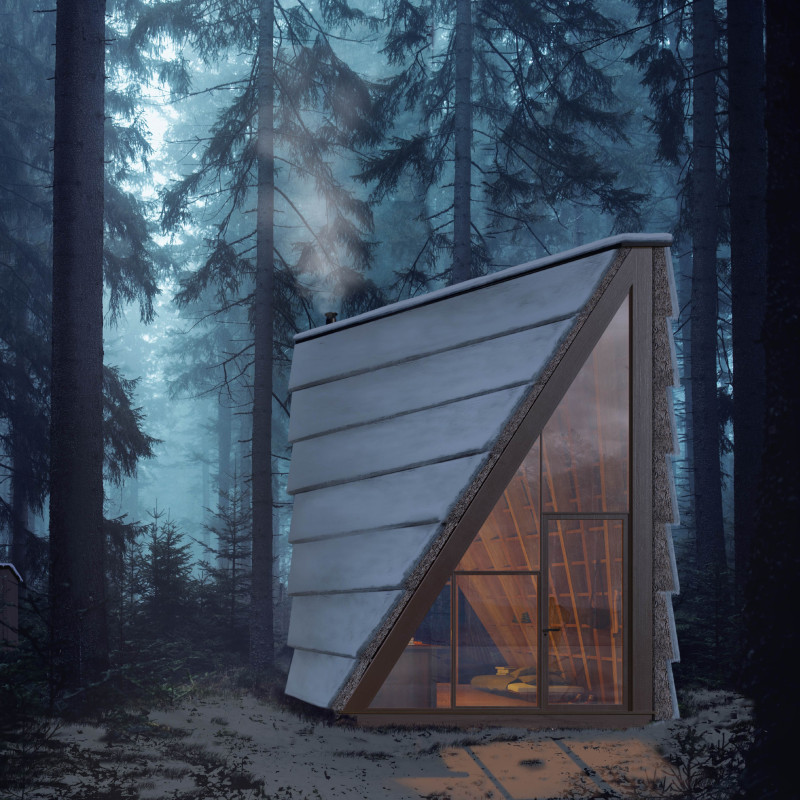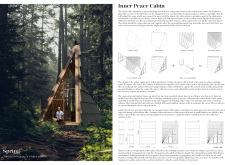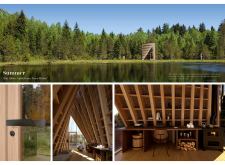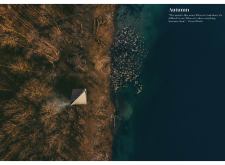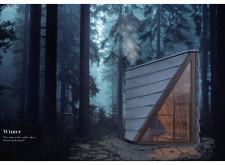5 key facts about this project
The cabin's function as a serene getaway is underpinned by thoughtful design choices that encourage a disconnection from daily stressors. The spatial arrangement supports various activities, offering a small living area that doubles as a workspace and sleeping quarters. The A-frame structure, characterized by its translated form, is instrumental in maximizing both the spatial efficiency and acoustical performance of the cabin.
Unique Design Approaches
A distinctive feature of this project is its form. The A-frame shape has been manipulated to optimize sound and light within the cabin, differentiating it from typical designs. The asymmetrical roof design invites natural light and facilitates air circulation, enhancing the user experience through its dynamic geometry. Furthermore, the structure provides panoramic views of the surrounding landscape, reinforcing the connection between the interior space and nature.
Material choices play a pivotal role in the project’s uniqueness. The cabin primarily utilizes wood as its structural foundation, creating a warm, organic atmosphere. Thatch roofing is employed not only for its aesthetic appeal but also for its sound-absorbing properties, aligning with the project's focus on acoustic performance. Large glass panels on the cabin's façade enable a seamless visual integration with the outdoor environment, enhancing both the aesthetic value and functionality of the space.
Sustainability is integrated into the design through careful selection of materials that minimize environmental impact. The use of locally sourced timber and eco-friendly thatch demonstrates a commitment to sustainable building practices while providing visual harmony with the landscape. The innovative construction methods further contribute to the cabin's role as a model for responsible architecture.
Exploring architectural plans, sections, and detailed designs unveils the comprehensive thought process behind the Inner Peace Cabin. The design reflects a balance between functionality and aesthetics, making it a valuable study in modern architectural practices that focus on wellness and connection to nature. For a deeper exploration of this project, it is encouraged to review architectural drawings and design concepts that illustrate its unique approach to retreat architecture.


